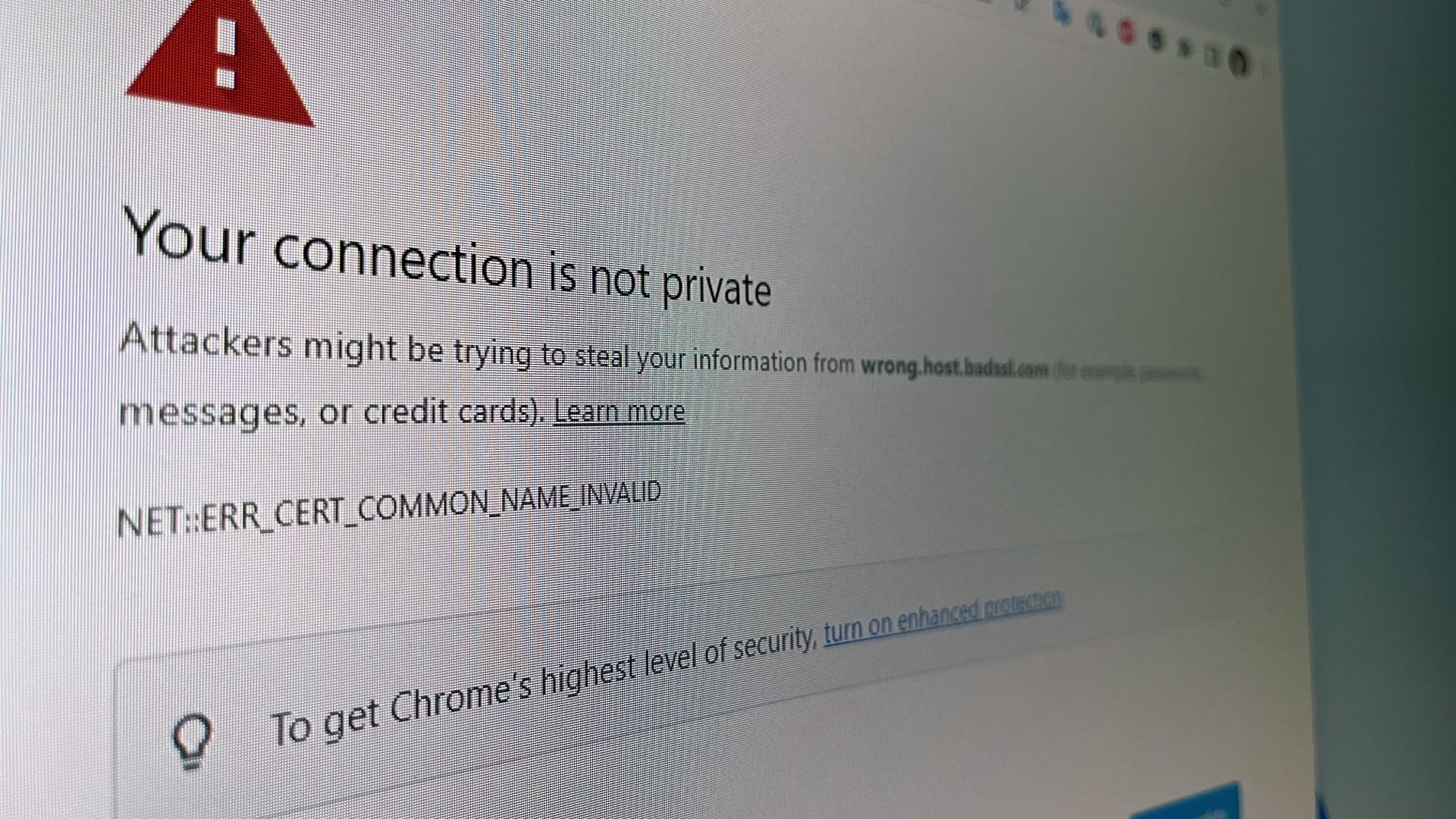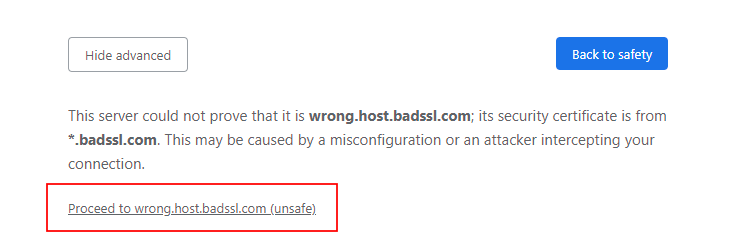Quick Links
Key Takeaways
To fix the NET::ERR_CERT_COMMON_NAME_INVALID error, you can try reloading the webpage, updating the browser and operating system, clearing the browser cache, and disabling your antivirus. Plus, you can check if any browser extension is interfering.
The error message "NET::ERR_CERT_COMMON_NAME_INVALID" is one of the cryptic privacy errors you're likely to come across when browsing the web. But what does it mean, and can you fix it? Here's all you need to know.
What Is the NET::ERR_CERT_COMMON_NAME_INVALID Error?
The NET::ERR_CERT_COMMON_NAME_INVALID is an error code primarily displayed by Google Chrome and other Chromium-based browsers while showing the "Your connection is not private" warning. It suggests that your web browser has found an issue with the SSL certificate of the website and terminated the connection to safeguard your privacy.
One of the primary reasons for this error code is the mismatch between the domain name of a website and the common name (CN) mentioned in its SSL certificate.
How to Fix ERR_CERT_COMMON_NAME_INVALID
Although only the website administrator or owner can fix the domain mismatch in the SSL certificate, you can deal with the other factors that make a web browser think that the CN and the domain name are different.
Reload the Website
Sometimes a simple reload can fix any temporary glitch causing the "cert common name invalid" error. So it's a good idea to start troubleshooting by reloading the webpage. But if it doesn't work, you can also try restarting the browser or rebooting the computer.
Clear Browser Cache
A corrupted or outdated cache can also interfere with your browser's ability to properly authenticate a website's SSL certificate. But you can fix this by clearing your browser's cache. And we have guides to help you clear the cache on Chrome, Edge, Firefox, and Safari.
Check for Browser Extension Conflict
Extensions are pretty helpful in increasing your productivity or enhancing the browser's functionality. But a poorly configured extension can also result in SSL errors, such as ERR_CERT_COMMON_NAME_INVALID. So to ensure that none of the installed extensions are interfering with the browser's functionality, you can try opening the webpage in an Incognito window. All extensions are typically disabled in the Incognito mode unless you have manually enabled any. In the case of the latter, disable all extensions before proceeding.
If the page opens without error, an extension is likely a culprit. You can enable them one-by-one to find and remove the problematic extension.
Temporarily Disable Antivirus Protection
Many modern antivirus programs have features to scan the encrypted traffic from your computer. But sometimes, these features can misfire, resulting in the NET::ERR_CERT_COMMON_NAME_INVALID error. You can check for this by temporarily disabling your antivirus when you come across this error. If the error goes away, then your antivirus is responsible. Then, you can either replace the antivirus with an alternative or contact its developer to fix the problem.
Update Your Browser and Operating System
Software updates are a crucial part of any device. They not only bring new features to an app or operating system but also fix bugs and other issues. So if you are running an older web browser version or your device operating system is not updated, you can encounter privacy errors. So make sure you update both the browser and the device operating system.
Our guides on updating Chrome, updating Windows 11, updating Windows 10, updating macOS, updating Chromebooks, and updating Ubuntu can help.
Contact Website Administrator
If none of the troubleshooting steps have worked so far, your machine isn't causing the error. So only the website owners or administrators can fix this issue by properly configuring the SSL certificate. You can reach out and inform them about the error.
How to Bypass NET::ERR_CERT_COMMON_NAME_INVALID Error
If you cannot fix the NET::ERR_CERT_COMMON_NAME_INVALID error but still need to access the website, you can bypass the error. But you should only do this if you trust the website and your connection to it. Otherwise, you risk jeopardizing your personal information.
To bypass the NET::ERR_CERT_COMMON_NAME_INVALID Error, click "Advanced" on the "Your connection is not private" warning page. Your web browser will now let you proceed to the website with a warning. Next, click the "Proceed to..." link, and the website will open.
How the "Cert Common Name Invalid" Error Looks in Firefox and Safari
As mentioned, while Chrome and other Chromium project-based web browsers display the ERR_CERT_COMMON_NAME_INVALID error code, the same error code will appear differently on Firefox and Safari.
The Firefox browser shows the SSL_ERROR_BAD_CERT_DOMAIN error code, whereas Safari doesn't display any error code. Instead, the Apple browser simply tells you the SSL certificate is invalid. Both browsers, like Chrome, allow you to bypass the error page if you trust the website.


